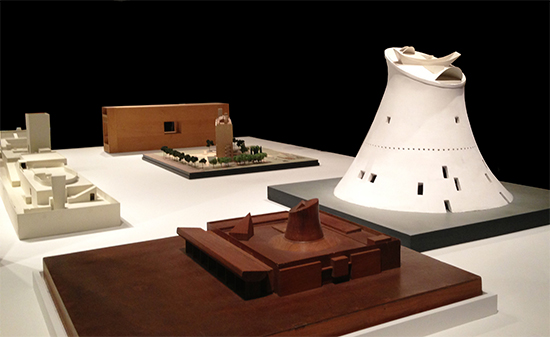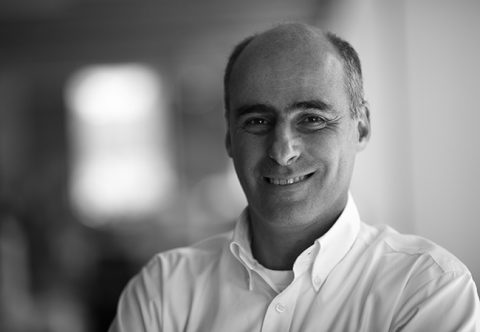
After visiting “An Atlas of Modern Landscapes,” the Le Corbusier exhibit at MoMA, a couple of weeks ago, I gained a different perspective on this architect’s work.
The MOMA exhibit packs an impressive collection of material in a relatively small space. The scope of Le Corbusier’s work, the range of scales engaged, the breadth of issues addressed, and the variety of vehicles used to represent them, is remarkable. The collection is as varied as Corbu’s work itself, and includes sketches, photographs, physical models, renderings, orthogonal drawings, paintings, books, furniture, lectures and videos.
A large portion of the gallery is devoted to those iconic projects that made Corbu a giant figure of 20th Century architecture: Villa Savoye in Poissy, Unite d’habitation in Marseille, Monastery of Sainte-Marie de La Tourette, Notre Dame du Haut in Ronchamp, civic and government buildings in Chandigarh and many others. Other sections of the exhibit focus on the social agendas that Le Corbusier championed through his career – through text, building design and city planning. Other items speak of his prolific output of formal ideas, such as the series of large format sketches, developed live during a series of lectures at Princeton, or the series of tiny sketches with daring ideas for expanding cities, based on aerial views, including Montevideo, Algiers and Sao Paulo.
The MoMA show offers a rare opportunity to see the architect’s work as a totality, in a very direct way. This unusual perspective made me think about the trajectory of his career. If we tend to think of Corbu as a world-famous, celebrity-architect of bigger-than-life projects and 20th century icons, it is interesting to remember that his creative life was bracketed by intimate and personal – almost solitary – experiences: his travels through Europe and the Middle East as a young man – where he produced a flood of delicate sketches and watercolors – and the low-key setting where he spent his final days, within the intimacy of his wonderful, tiny “cabanon” in Roquebrune-Cap Martin, surrounded by the beauty of the Mediterranean landscape.
I had a strong emotional reaction to this exhibit. Looking back, perhaps this was inevitable, given the roots my own architectural education: the unchallenged modernist – particularly Curbusian – tradition, with a touch of regional flavor, at the school of architecture in Uruguay in the early 1980’s; the pervasiveness of the international style in Israel in the late 1980’s, still reverberating from the ever-present Bauhaus roots of the early Israeli cities; and Harvard GSD in the early 1990’s, a dogged enclave of modernism nourished by Gropius, Breuer and Sert.
Along with the power and originality of Corbu’s ideas, MoMA’s exhibit reveals his relentless pursuit of meaning in design, his ability to think, write, draw and sell – the promotional movie of Le Corbusier explaining his “Five Points” is a an early infomercial. The exhibit’s narrative revolves around landscape, a theme that helps the visitor make sense of a vast volume of work. In my opinion, another theme runs through Le Corbusier’s work: the unrelenting pursuit of beauty. This theme is particularly interesting for an artist that set out to break with past styles and conventions, and so, in effect to invent a new formal language – involving painting, sculpture, architecture and text – a new definition of beauty itself. Ironically, towards the end, his architecture became a style in itself, a set of conventions followed by scores of architects throughout the world, including indelible iconic images that will probably remain in the canon of architecture and design for many future generations of architects.




